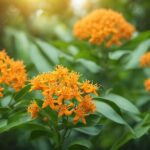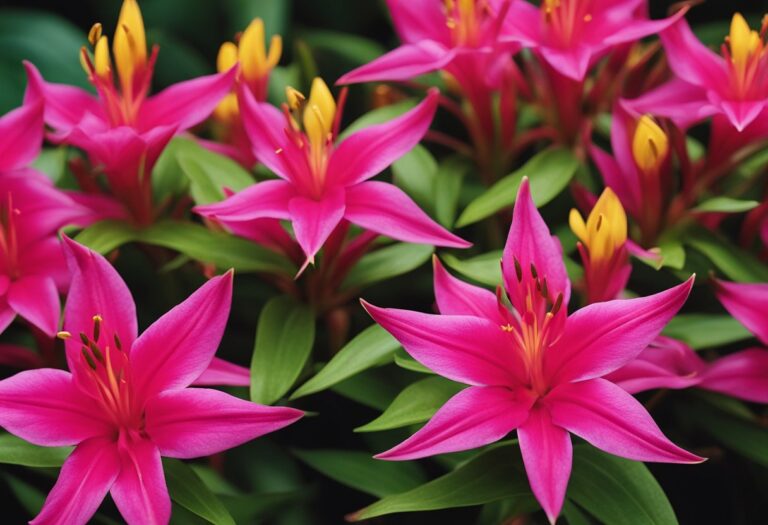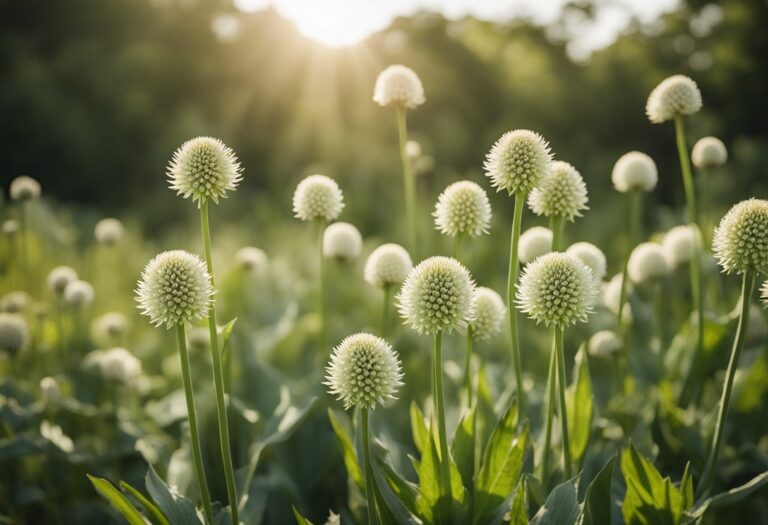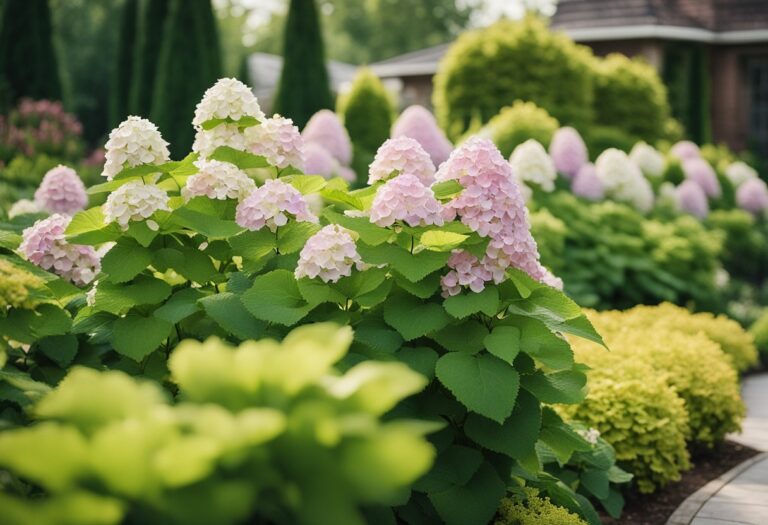Overview of Perennial Flax
Perennial Flax, scientifically known as Linum perenne, is a semi-evergreen perennial renowned for its stunning appearance during bloom. You can easily identify this plant through the following features:
- Leaves: Narrow, blue-green in color.
- Flowers: Saucer-shaped with a sky-blue shade, usually 1 inch across.
This hardy plant forms tufts and is not overly demanding regarding soil quality. However, it thrives best in a well-draining, nutrient-rich environment.
Whether you have clay soil that retains moisture or sandy soil that drains quickly, Perennial Flax can generally adapt, although the latter may require more frequent watering.
Here’s what you can expect in terms of bloom:
- Bloom Time: Late spring to midsummer.
- Duration: Flowers typically bloom for 8 to 12 weeks.
- Behavior: Flowers open in the morning and last for a day.
Perennial Flax not only stands up well to drought and heat but also adds a cool splash of color to any landscape during the intense summer heat. Native to Europe and naturalized in North America, this plant is often found in meadows and prairie-like environments.
A low-maintenance and long-blooming plant, Perennial Flax provides a delightful touch to gardens with its airy stems and delicate, yet resilient nature.
Growth Habits
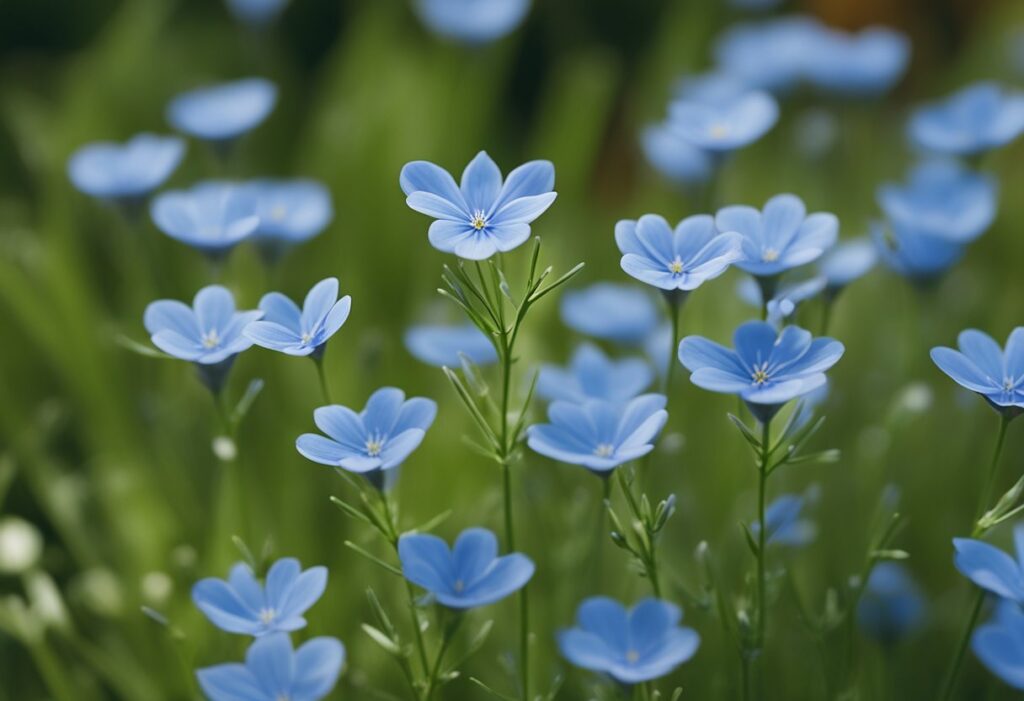
Perennial Flax (Linum perenne) exhibits a hardy growth habit, able to withstand tough conditions while being relatively low maintenance. Understanding its growth patterns can help you cultivate it successfully in your garden.
Climatic Requirements
Perennial Flax thrives in various climates, showing a preference for moderate conditions. It can bloom from late spring to midsummer, with the blossoms sometimes lasting up to 12 weeks when the climate is favorable. Here’s what you need to consider for the climate:
- Temperature: It performs best in temperate climates.
- Sun Exposure: Full sun is ideal but can tolerate partial shade, which may prolong blooming.
Soil Preferences
Your Perennial Flax isn’t particular about soil type but needs specific drainage. Here’s a quick guide to its soil preferences:
| Soil Type | Watering Frequency | Notes |
|---|---|---|
| Well-draining | Adjust based on type | Perennial Flax requires well-draining soil. |
| Clay | Less frequent | Holds moisture longer. |
| Sandy | More frequent | Drains quickly, necessitating increased watering. |
Plant Development
Regarding growth and development, Perennial Flax reaches a height of 12-15 inches with a spread of around 18 inches. This plant is semi-evergreen, forming tufts of narrow, blue-green leaves. You’ll find that it:
- Begins profuse blooming in early summer.
- Is a short-lived perennial, lasting about three years, thus may require re-seeding for continued growth.
Cultivation Techniques
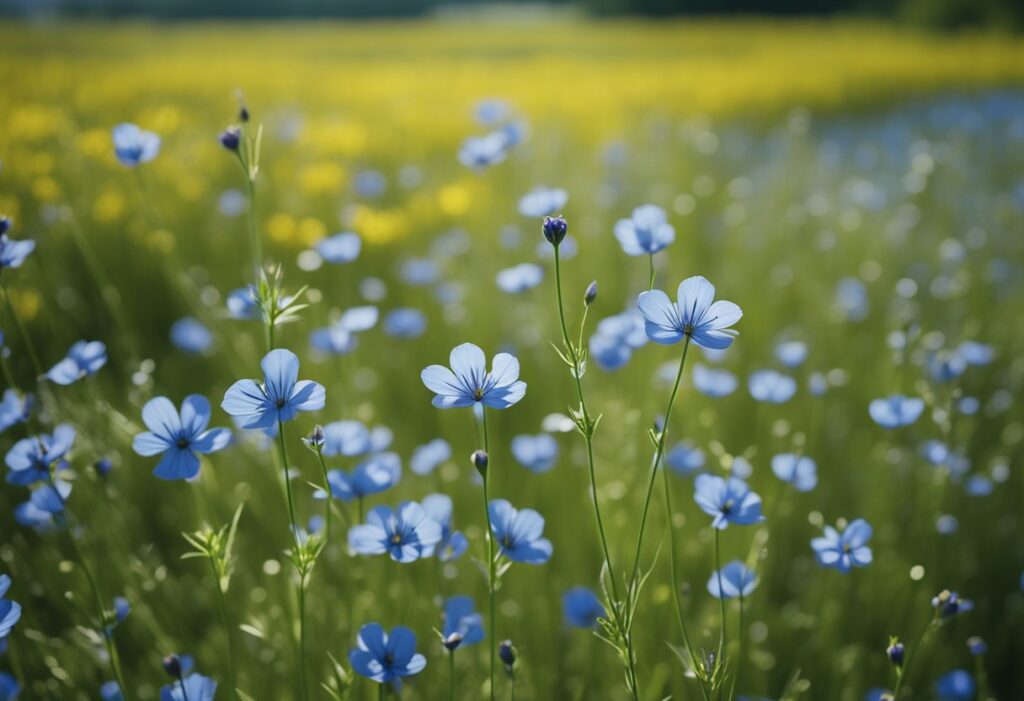
In cultivating Perennial Flax (Linum perenne), you must consider the right propagation methods, adhere to planting guidelines, and follow a strict maintenance and care regimen to ensure healthy growth and blooming.
Propagation Methods
Perennial Flax can be propagated through seeds. It’s best to sow Linum perenne seeds directly into the garden after the danger of frost has passed. If planting seeds indoors, do so 6 to 8 weeks before the last expected frost date. Ensure you use a seed starting mix, and lightly cover the seeds as they need light for germination.
Planting Guidelines
- Soil Requirements: Choose a well-draining soil. Perennial Flax isn’t demanding about soil quality but thrives best in nutrient-rich conditions.
- Spacing: Plant seeds or seedlings about 12 to 18 inches apart to allow sufficient room for growth.
- Depth: The top of the root ball should sit about an inch below the soil surface.
- Lighting: Full sun is ideal, but they can tolerate partial shade, which might even extend the blooming period.
- Watering: Water the plants sparingly as Perennial Flax is drought-tolerant. Overwatering can lead to root rot.
Maintenance and Care
- Watering: Water Perennial Flax when the soil feels dry to the touch; it’s better to under-water than over-water.
- Fertilizing: Fertilize sparingly; a nutrient-rich soil at planting time should suffice since the plant isn’t a heavy feeder.
- Pruning: Deadheading is unnecessary as it can reseed itself, but you can remove spent flowers to promote a tidy appearance.
- Life Span: Be mindful that Perennial Flax is short-lived, lasting about three years. Plan to re-seed to ensure continual growth and blooms in your garden space.
Uses and Applications
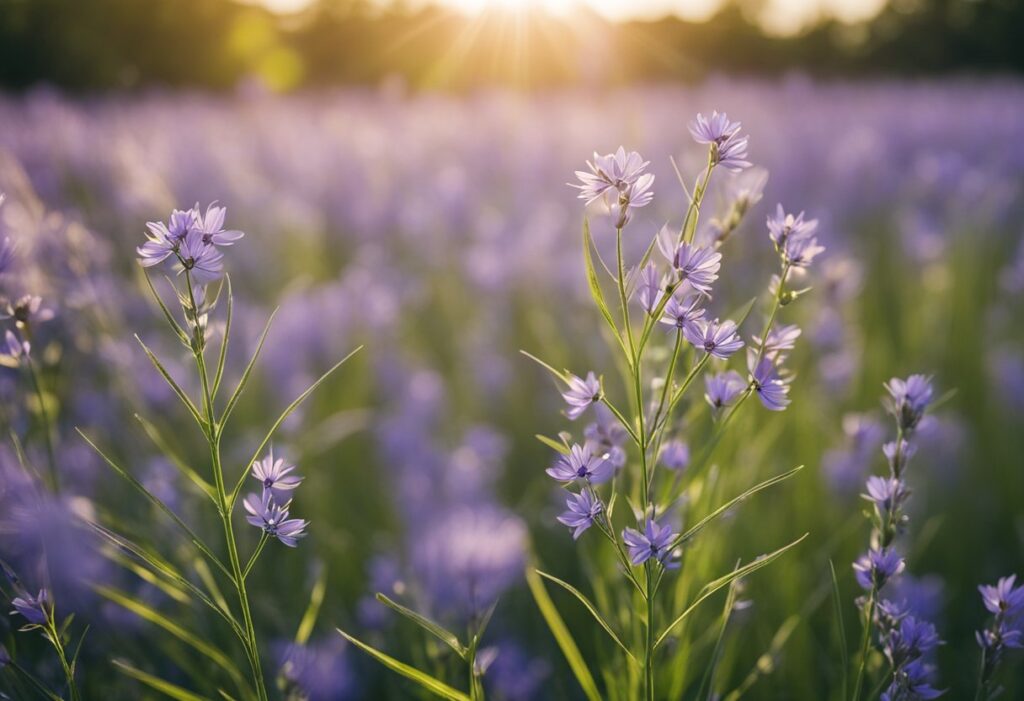
Perennial Flax, known scientifically as Linum perenne, offers significant benefits in landscape design and textile production. Understanding its utility helps harness the plant’s full potential.
Landscape Design
You can incorporate Perennial Flax into your garden for its ornamental value. Its sky-blue flowers and semi-evergreen foliage are vibrant from late spring to midsummer. The plant’s tufts of narrow blue-green leaves contribute to its aesthetic appeal, making it a striking choice for:
- Rock gardens: Its drought tolerance is suited for rocky, well-drained environments.
- Borders: The slender stems and blossoms add a delicate texture to garden borders.
- Mass planting: Create a sea of blue by planting Perennial Flax en masse.
Textile Production
Perennial flax fibers are extracted from the stems for use in textile production. Known for their:
- Strength: Flax fibers are durable, which translates to longevity in textiles.
- Flexibility: These fibers can be spun into fine threads for fabric weaves.
Your usage in textile production can range from creating linen fabrics to specialty papers, providing a natural and sustainable material choice.
Pests and Diseases
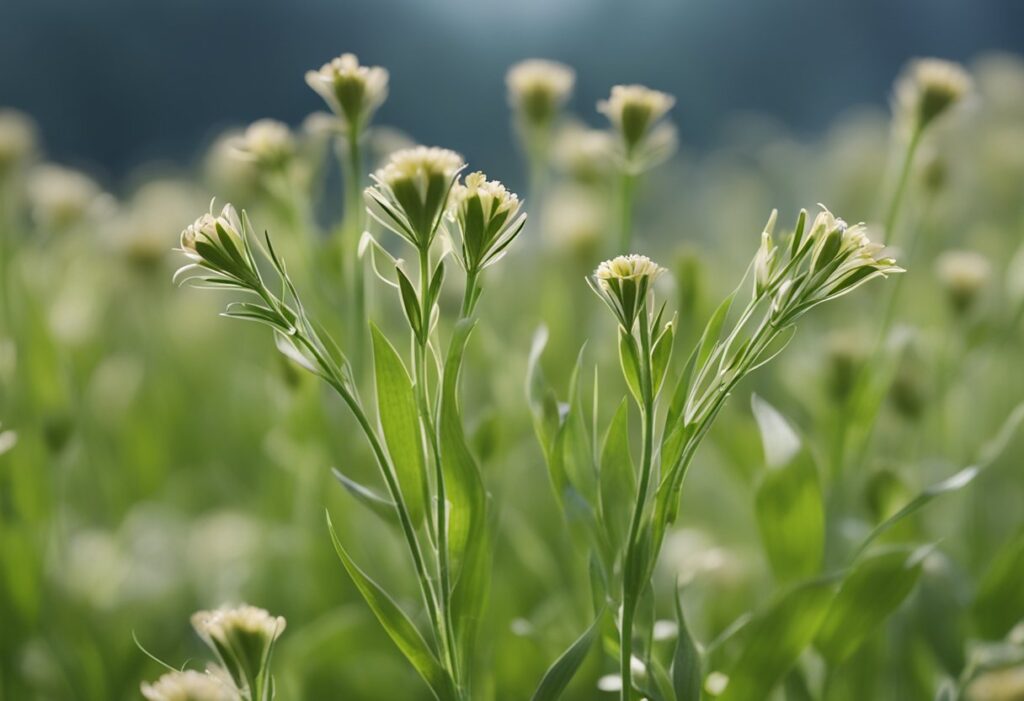
When growing Perennial Flax (Linum Perenne), you will likely experience very few issues with pests and diseases. This plant is resilient, but awareness of potential problems can help you maintain its health.
Common Pests
While Perennial Flax is resistant to many pests, there are a few that you might encounter:
- Aphids: These small, sap-sucking pests can occasionally be found on your plants.
- Slugs: In damp conditions, slugs may target the foliage.
Monitoring your plants regularly for these pests can help prevent any significant damage.
Disease Management
Generally, Perennial Flax is not susceptible to many diseases. However, proper planting and care can reduce the risk of any disease-related problems:
- Spacing: Space your plants adequately to ensure good air circulation and reduce the risk of fungal infections.
- Watering: Water your plants at the base to avoid excess moisture on the leaves, further minimizing fungal disease risk.
Frequently Asked Questions
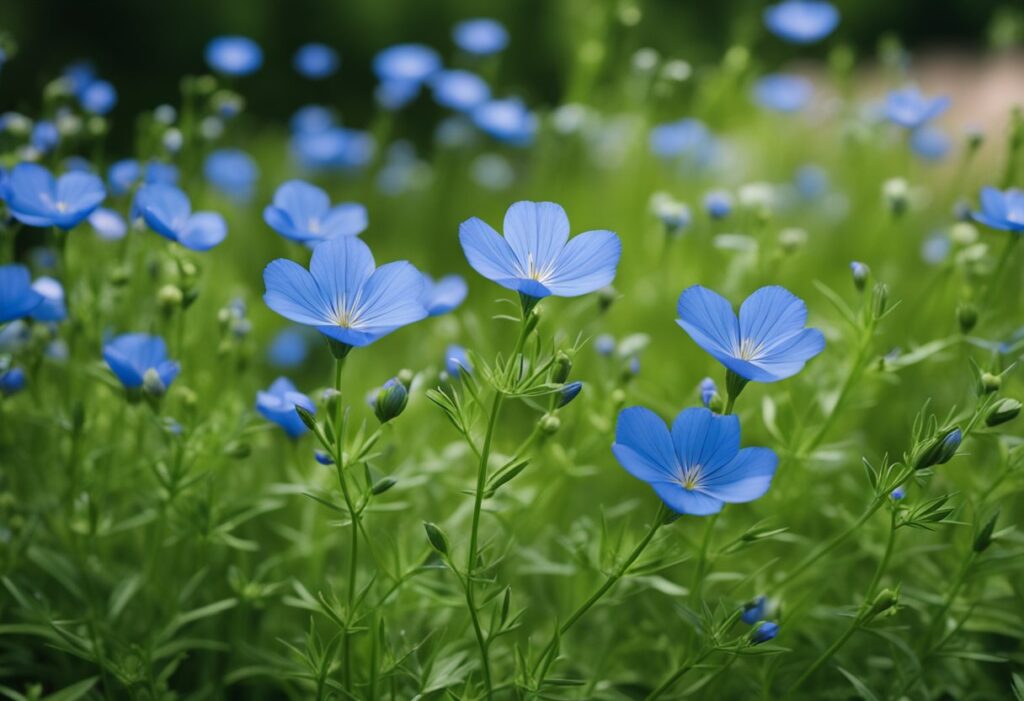
In this section, you’ll find information to some of the most common inquiries regarding the cultivation and maintenance of Perennial Flax, or Linum Perenne.
How should Perennial Flax be spaced when planted?
You should space your Perennial Flax plants about 12 to 18 inches apart. This spacing allows each plant enough room to grow while providing full ground coverage.
How can one effectively care for Linum Perenne?
To care for Linum Perenne effectively, ensure regular watering, particularly through the growing season, and plant in a location that receives full sun to partial shade. Maintain moist, well-draining soil, but avoid overwatering to prevent root rot.
What is the typical height of Linum Perenne once fully grown?
Once fully grown, Linum Perenne typically reaches a height of 1 to 2 feet. Cultivation conditions such as soil quality and sun exposure can influence height.
Can Linum Perenne be considered invasive in certain regions?
Linum Perenne is not generally considered invasive. However, due to its self-seeding nature, it can spread quickly under the right conditions.
Which type of habitat is suitable for planting Linum Perenne seeds?
Linum Perenne seeds thrive in habitats with well-draining soil and good sun exposure. It is adaptable to various soil types, though it prefers a slightly acidic to neutral pH.
What is the native range of Linum Perenne?
Linum Perenne’s native range includes parts of Europe and Asia. Today, it has been naturalized in various regions across North America.

